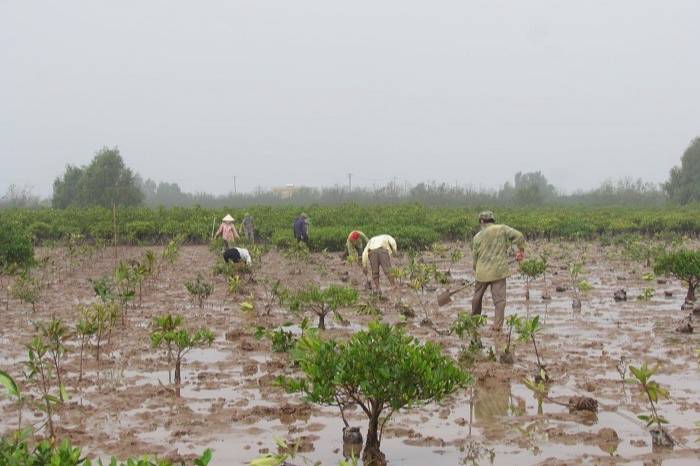The Government has just agreed with the proposal of the Ministry of Natural Resources and Environment to nominate Xuan Thuy National Park (Nam Dinh province) as an ASEAN Heritage Park.
The Government assigned the Ministry of Natural Resources and Environment to preside over and coordinate with the People's Committee of Nam Dinh Province, relevant ministries, and agencies to implement and complete the following procedures in the process of proposing recognition of Xuan Thuy National Park as an ASEAN Heritage Park before June 30, 2025.
Xuan Thuy National Park has a total area of about 15,000 hectares, of which the core area is 7,000 hectares, and the buffer zone is about 8,000 hectares; located in 5 communes: Giao Thien, Giao An, Giao Lac, Giao Xuan, and Giao Hai.
In January 1989, the National Park was officially recognized as a member of the Ramsar Convention (Convention on the protection of wetlands of international importance, especially as migratory habitats for waterfowl).
After joining the Ramsar Convention, Xuan Thuy Wetland became the 50th Ramsar site in the world, the first Ramsar site in Southeast Asia, and the only one in Viet Nam for 16 years from 1989 to 2005 (in 2005, Viet Nam had the second Ramsar site, Bau Sau, in Cat Tien National Park, Dong Nai province).
 Xuan Thuy National Park is concerned with restoring and developing mangrove forests and protecting the ecosystem
Xuan Thuy National Park is concerned with restoring and developing mangrove forests and protecting the ecosystemXuan Thuy National Park is a typical coastal estuarine wetland with natural terrain formed according to the law of deposition and erosion of the estuary of the Northern Delta. Xuan Thuy National Park is assessed to have many types of ecosystems with different characteristics in terms of natural conditions, habitats, and biological communities: tidal flats with mangrove forests; tidal flats without mangrove forests; sand dunes blocking the river mouth; shrimp ponds; tributaries; tidal creeks; sand strips on the outer edge of Con Lu; coastal waters of Con Lu; waters of the Ba Lat estuary; agricultural ecosystems.
To date, Viet Nam is one of the countries with the most significant number of ASEAN Heritage Parks in Southeast Asia, with 10 areas, including Hoang Lien National Park (Lao Cai, Lai Chau), Ba Be National Park (Bac Kan), Vu Quang National Park (Ha Tinh), Bai Tu Long National Park (Quang Ninh), Ngoc Linh Nature Reserve (Kon Tum), Chu Mom Ray National Park (Kon Tum), Kon Ka Kinh National Park (Gia Lai), U Minh Thuong National Park (Kien Giang), Bidoup-Nui Ba National Park (Lam Dong) and Lo Go-Xa Mat National Park (Tay Ninh).